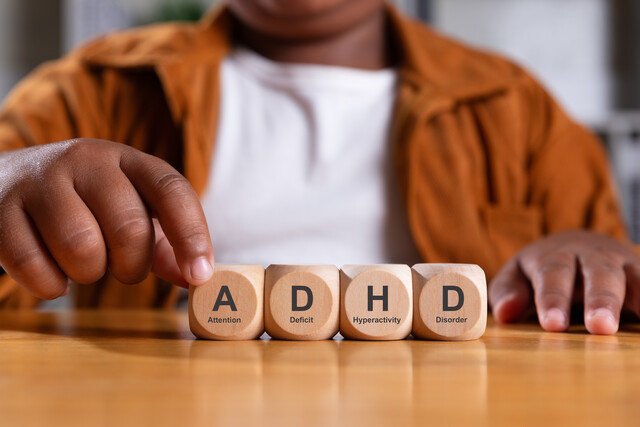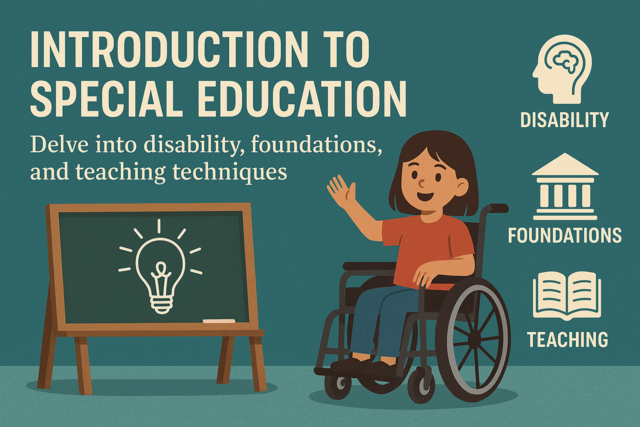Introduction
Infant development is the earliest stage of a child's development after birth. In general, the term infant refers to babies between 0 to 12 months old. The following will help you learn the major changes that occur to humans during infant development, problems that may arise during this stage, and ways to help support healthy development during this stage.
What occurs during infant development?
There is a lot of individual variation among infants regarding behaviors like sleep/wake patterns and eating. However, there are typical behaviors that are characteristic of most all infants. For one, lots of sleeping is typical as infants spend the majority of each day (16 to 18 hours) asleep1. Young infants are only actively awake and alert enough to interact with others for about one total hour each day. As babies grow through the first year of life, their sleep patterns shift and many can sleep through the night by 6 months of age1.
Eating every three to four hours is also typical of infants due to their small stomachs1. Also, lots of crying is to be expected as it is a form of communication for infants. The average 3-month-old cries for about one total hour each day2. Infants use cries to signal things like hunger, sleepiness, and distress2. Most babies reach their peak amounts of crying around 6 weeks of age2. According to Zero to Three2, the condition called colic is characterized by infant crying:
- Begins/ends for no obvious reason
- Lasts at least three hours daily
- Happens at least three days per week
- Continues for three weeks to three months
Research has shed light on the developmental milestones, or typical growth changes, which occur for infants. The following chart summarizes the major milestones that occur between birth and 12 months of age, broken down by the major domains of child development:
|
Domain: |
Milestones between 0-3 months: |
|
Physical |
Can grip objects and fingers |
|
Cognitive |
Shows signs of learning (e.g., how caregivers will respond to cries) |
|
Emotional & Social |
Begins recognizing faces, voices, smells; begins showing early signs of responding to others; relies on caregivers for calming distress |
|
Language |
Communicates through sounds (e.g., crying) and facial expressions; Can begin to express needs (e.g., hunger) and emotions (e.g., distress, happiness) |
|
Domain: |
Milestones between 3-6 months: |
|
Physical |
Can begin pushing body up, rolling, rocking, and sitting up with assistance; uses fingers and mouth to grasp objects and explore |
|
Cognitive |
Learns about things in his/her immediate environment through observation and exploration; can pick up on daily routines (e.g., bed time) |
|
Emotional & Social |
Engages more with people around him/her through sound and facial expressions; more ability to self soothe when distressed |
|
Language |
Communicates through more sounds than before (e.g., laughter, cooing) and facial expressions |
|
Domain: |
Milestones between 6-9 months: |
|
Physical |
More control over body (e.g., fine motor skills, can sit on his/her own, crawling, scooting) |
|
Cognitive |
Learns more through observation and imitating others; thinking skills progress (e.g., learning to solve basic problems like finding a toy) |
|
Emotional & Social |
More ability to express feelings through tone of voice and speech; begins showing personality and social preferences more (e.g., discomfort with strangers) |
|
Language |
Communicates through more sounds |
|
Domain: |
Milestones between 9-12 months: |
|
Physical |
Can travel more through crawling, scooting, standing, and walking, in many cases |
|
Cognitive |
Can follow basic directions (e.g., "come here"); can understand that people and objects still exist, even when they are out of sight; can build memory through repetition/practice |
|
Emotional & Social |
May cry whenever caregivers leave and want to cling; can build trust that caregivers will return |
|
Language |
Can understand more words than he/she can speak; can form basic words (e.g., "dada" and "mama") |
Source: Adapted from Zero to Three fact sheets 2, 3, 4, 5
What problems may arise during infant development?
As with any stage of child development, there are many problems that may occur during infant development. Some include premature birth, low birth weight, birth defects, and infant mortality. The following presents basic knowledge about each of these areas.
Premature birth refers to the birth of a fetus before reaching the gestational (in womb) age of 37 weeks1. About 12 percent of infants in the U.S. are born premature each year and such births comprise approximately 70 percent of newborn deaths1. However, with modern medical care provided through neonatal intensive care units (NICU), many premature infants have high survival rates. Although there are higher survival rates than ever before, prematurity comes with a number of health risks for infants, including developmental delays1 (e.g., cognitive deficits, physical disabilities). However, prematurity does not guarantee that developmental problems will occur, as many premature infants show typical development later in life.
Low birth weight is another problem that may arise during infant development. While many premature infants have low birth weight by virtue of being born before reaching full term, what qualifies as low birth weight is determined by the gestational age1. For full term babies (babies born after 37 weeks gestational age), low birth weight is defined as under 5 pounds, 4 ounces1. Having low birth weight is another potential of developmental problems for infants.
Birth defects are yet another problem for infant development. According to the U.S. Centers for Disease Control and Prevention, about 120,000 babies experience birth defects annually6. Birth defects may be identified before or after a baby is born and affect any body part or organ. Their causes may be genetic or due to prenatal stressors (e.g., substance use of the mother during pregnancy). Examples include cleft lip and heart abnormalities.
Infant mortality is another major consideration for the development of infant. It is defined as a death that occurs within the first year of life1. On average, 6.4 out of 1,000 babies experience infant mortality in the U.S. which is one of the highest infant mortality rates of all developed countries1. By comparison, this same rate is 5.3 in Canada, 3.9 in Spain, and only 3.2 in Japan. A major cause of infant mortality is a condition called sudden infant death syndrome, or SIDS. SIDS is defined as an unexpected death of a healthy infant and it most often occurs between 2 to 4 months of age1. To date, exact causes for SIDS are unknown although there are identified risk factors such as improper sleep positions (e.g., having infants sleep on their backs has reduced SIDS rates).
What are ways to support healthy infant development?
One way to help support healthy infant development is through preventative screening. Infant screening is standard practice within the U.S. health care system and is done routinely right from birth throughout the first year of life to help detect problems like hearing loss, brain damage, diseases (e.g., hypothyroidism) and physical abnormalities7.
Another way to help support healthy infant development is through healthy caregiving practices8. For examples, parents and other caregivers can help infants learn communication skills through talking and reading to them. Also, emotional and social development can be supported by holding and cuddling babies, as this helps them form secure attachments to their caregivers.
Conclusion
Infant development is the earliest stage of a child's development after birth and a key stage that influences the remainder of early childhood development. There are typical behaviors to expect of infants such as lots of sleeping, frequent eating, and rapid gains in physical and cognitive skills. However, this is a fragile stage of development, as problems like premature birth, birth defects, and mortality affect many infants. Screening and healthy caregiving practices are two major ways to support healthy development during this stage.
Introduction
Physical development is a major domain of early childhood development. It encompasses the biological development of the body (growth, organ development) and skills that are performed using the body. The following section covers the key areas of knowledge one should have in regard to early childhood physical development, including the development of the body, motor skills, senses, and brain.
Body Development
Early childhood development is a time of many rapid physical changes. The body grows quickly in terms of size and weight, especially between birth and 2 years of age1. The bones grow rapidly and the size of the head -- which is proportionally very large at birth -- begins to become more proportionate to the rest of the body. The amount of physical growth that occurs and the ultimate outcomes, such as adult height, are dependent on both "nature and nurture," as both genetics and environmental influences (e.g., proper nutrition) play a role.
One example of a major physical change that occurs in early childhood is the growth of teeth. This usually happens within year one of development and is referred to as teething. In early childhood, children eventually lose their baby teeth, around age 6, to make way for adult teeth to grow.
Motor Skills
Another key physical change that occurs in early childhood is the development of motor skills, or physical body movements. Such skills can be gross or fine2. Gross motor skills involve larger muscles and movements like walking, kicking, and throwing, while fine motor skills involve smaller muscles and movements like the muscles of the hand, which aid in picking up food and writing. During early childhood development, these skills develop from infancy.
Because the development of these skills takes time, infants are born with certain bodily reflexes (involuntary responses) that help them do things like suck while feeding and grasp fingers. The following table outlines examples of infant reflexes and examples of those that continue into adulthood:
|
Reflex |
Description |
|
Babinski reflex |
When the foot sole is touched, an infant's toes spread out |
|
Startle reflex |
Infant extends arms then pulls them toward body and cries briefly in response to loud noises |
|
Palmar hand grasp |
Infant grips a finger or object placed in his/her hand |
|
Rooting and sucking |
Infant turns head to search for a nipple in response to a cheek touch; begins to suck when a nipple touches the lip |
|
Reflexes that continue into adulthood: |
|
|
Blinking reflex |
Blinking in response to bright light or an eye touch |
|
Cough reflex |
Coughing in response to airway irritation |
|
Gag reflex |
Gagging in response to the stimulation of the throat or back of mouth |
|
Sneeze reflex |
Sneezing in response to the irritation of nasal passages |
|
Yawn reflex |
Yawning in response to the need for more oxygen |
Source: Adapted from information provided by the National Institutes of Health2
Senses
Another key physical change that occurs in early childhood is the development of the five senses. These include vision, hearing, taste, touch, and smell. Regarding sight, babies are born with 20/400 vision (compared to 20/20 vision for adults)1. In other words, newborn babies can see at a length of 20 feet at the same level of accuracy that an adult can see at a length of 400 feet. Between the ages of 6 months and 3 years, sight begins to improve toward adult levels.
Regarding hearing, unless there is a hearing impairment, babies are born with this sense. Hearing develops prenatally and infants show preference for their mom's voices which they are able to hear in the womb1. Taste is another sense which is already developed at birth. Infants prefer sweet tastes over others which aids in their preference for breast milk1. Interestingly, there is evidence that fetuses can pick up on tastes from their mother's diet while in the womb1. The sense of touch is important during early development, as touches from caregivers -- skin-to-skin contact, massage -- can help soothe infants and promote bonding. Finally, the sense of smell is one that develops within early childhood and becomes more acute over time. Infants appear to be able to distinguish the smell of their mothers and show preference for it as early as a few days old1.
Brain Development
Brain development is another critical area of physical development that occurs during early childhood. The brain first begins development within two to three weeks of conception and continues throughout early adulthood3. It is fully matured by early adulthood. Both "nature and nurture" shape how the brain develops. Genetic influences impact how the brain circuitry is wired, such as neurons and connections between regions, while environmental factors like nutrition, life experience, and stress shape the exact architecture of the brain over time3.
Key terms related to early brain development include plasticity and pruning. Plasticity is the brain's ability to grow and change over time1. Humans are born with high brain plasticity and thus the ability to learn very rapidly1, 3. This makes children, especially very young children highly impressionable and while this is very valuable for learning, this high plasticity makes their brains vulnerable to problems if problems occur during early development such as trauma, high stress, or environmental toxins3, 4.
Source: Center on the Developing Child at Harvard University5
In addition to plasticity, pruning is another key term related to early brain development. Pruning is a process which involves the selection of particular neural circuits within the brain through experiences1, 3. As new brain connections are made, for example through learning certain language or playing a musical instrument, certain pathways are formed. If these connections continue to be used, they are retained over time while those that are not used eventually break down and disappear1. In other words, it is the idea of "if you don't use it, you lose it." Most pruning takes place in early childhood.
Conclusion
Physical development is a major domain of early childhood development. From before birth throughout the first few years of life, many critical and rapid physical changes occur for human beings. Some major changes that occur to the body include weight gain, bone growth, height increases, and the growth of teeth. Babies are born with reflexes to assist in their movement, while both fine and motor skills develop throughout early childhood to give them increased control over their bodies. The five senses are all present in some capacity at birth and many continue to advance throughout early childhood, particularly vision. And early childhood is a critical time of development for the brain as it is highly malleable and open to new information and connections that allow for rapid learning.
























